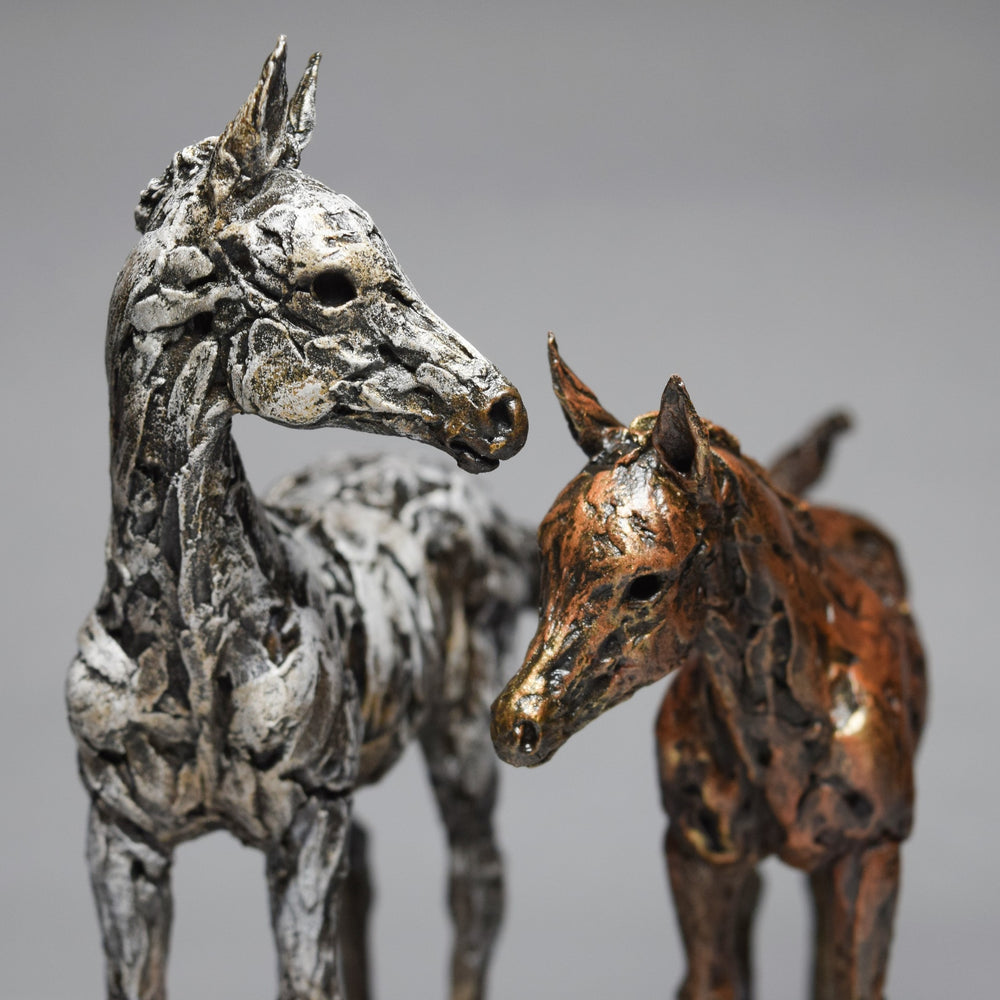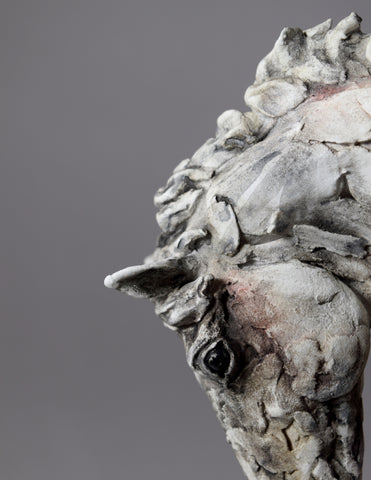
A pair of air dry clay sculptures, painted with acrylics and finished with varnish
Disclosure: This post may contain affiliate links. I may earn a small commission at no extra cost to you, supporting my blog and content creation. Thank you!
If you’re painting your air dry clay sculptures, you may want to consider varnishing them. Yep, just when you thought all your hard work was done, I am suggesting that you add another step to your creative process. But trust me, it can make a big difference.
Varnish is a non-pourous, transparent layer that is put on top of a final artwork (be it painting, drawing, sculpture, you get the idea). Varnishes can be removable or permanent. They can be brushed or sprayed on and generally come in 3 different levels of sheen.
Reasons to Varnish
I use varnish on my Creative Paperclay sculptures for the same reasons that painters varnish their paintings:
Protection 🐉
Unvarnished artworks are more vulnerable to the elements and aging (aren’t we all). A high quality, artist-grade varnish adds a layer of protection against dust, UV rays (which dull colours over time) and yellowing (depending on the paint).
Environmental considerations are key for air dry clay artwork: Because the clay isn’t vitrified like ceramics, it’s more susceptible to humidity. You never know what sort of home a collector has, so ensuring that you’ve done all you can is good artistic practice.
I mentioned that some varnishes are removable, and the reason for that is to help with restoration/future maintenance of the piece. Dust and dirt collect on top of the painting, and after some time, the varnish can be removed, and a fresh layer added on, thereby cleaning the painting.
I do not use a removable varnish. I think a permanent, integrated varnish provides enough protection, and I ensure I put down several layers. It’s always worth knowing good professional practice, even if you decide that it’s not the best for you and your art.

Unify surface quality and improve colour 🌈
If you’re like me, and you use a variety of surface decorations, a piece can end up looking “patchy” with uneven matte or shiny areas. Different mediums and gels have difference finishes, and even the sheen of acrylics will change depending on how much water is added. A varnish will even out the overall sheen of the finish sculpture and make all the elements feel cohesive.
This unification of the surface also means that, if you’re using a gloss or satin varnish (more on that below), the darker colours of a painting deepen and look more vibrant. We’ll get into that below.
Matte or Glossy?
Varnishes generally come in 3 levels of finish: glossy, matte, and satin which is a mix of the two. The level of sheen you choose is a personal preference, but there are a couple of basics to understand.

Gloss varnish will make colours look more saturated, especially darks. I won’t get into the science of it, suffice it to say, gloss varnish encourages the reflection of light off the surface.
On the other hand, the matting agent inside a Matte varnish is often white, which can appear to lighten dark colours. On light coloured artwork it isn’t noticeable, but on dark paint, it can make the surface appear cloudy or frosty.
Satin is a balance between the two, so while it is not matte, it is not as reflective as gloss.
Historically, different groups of painters have preferred one type of sheen over another for these various reasons. The Impressionists found the highly glossed surfaces gave paintings of the time an ostentatious feels, while representational painters preferred a gloss surface because of the increased sense of depth.
There are also artists who choose not to varnish their work. No matter your aesthetic requirements, finding the appropriate surface quality is a very personal choice.
Best Varnish for Air Dry Clay?
I get lots of questions asking me which varnish is my top choice for air dry clay sculpture. Honestly, most products designed for artist use are more than adequate. As someone working from home I find water-based, brush-on varnish the easiest (and least toxic) to use. I have used spray (outdoors obviously) with great success, but it's no longer my go-to method. My current favourite is Liquitex Satin or Matte varnish, but I recommend Golden MSA spray varnish for hard to brush pieces.
 This sculpture was varnished using spray matte varnish
This sculpture was varnished using spray matte varnish
Adding varnish helps ensure your hard work looks its best for a long time, and put bluntly: It’s the easiest way to make your sculpture’s surface look better. It seals in the good stuff and keeps out the bad, and can enhance the appearance all in one go. Seems a pretty open and shut case to me.
What's Next?
Discover the techniques for varnishing your air dry clay art

